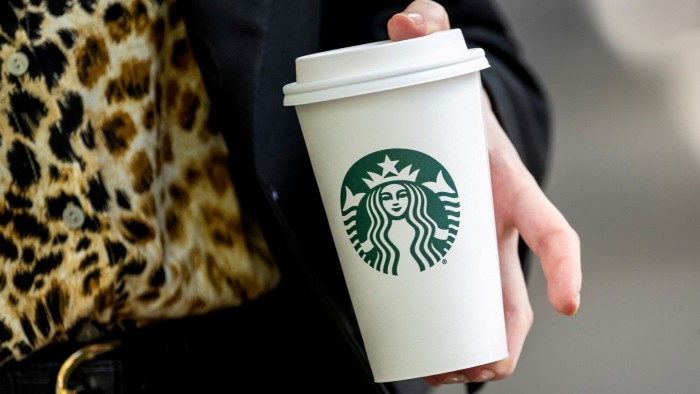Unlock the Editor’s Digest for free
Roula Khalaf, Editor of the FT, selects her favourite stories in this weekly newsletter.
Brian Niccol has wasted no time brewing plans for a turnaround at Starbucks. Since taking the helm in September, he has slimmed down an overly complicated food and beverage menu, cut 7 per cent of its corporate workforce and made moves to speed up services and spruce up its stores.
All these are steps in the right direction. But as Starbucks’ fiscal second-quarter results this week show, they have yet to give sales a jolt. The 50 per cent slump in net profit also shows revitalising an ailing coffee giant that has nearly 41,000 stores worldwide will take time and money. Trump’s tariff wars will only add to the challenges.
Niccol has rightly made fixing the US business his priority. The American market is Starbucks’ biggest. The 17,000-plus cafés there generated $26.7bn in net revenue last year — or almost three-quarters of the group total. But high prices, long wait times, issues with mobile app ordering and rundown locations have all taken a toll on customer satisfaction in recent years. The result: US same-store sales fell for the fifth consecutive quarter, dropping 2 per cent as consumers sought their caffeine fixes at rivals such as Dunkin’ and McDonald’s instead.
Niccol hopes the human touch will lure them back. He is hiring more baristas, fixing up stores and offering free refills of regular coffee and tea to customers. Bringing back the “coffeehouse vibe” to Starbucks comes at a cost, though. Store operating expenses across the company rose 12.1 per cent to $4.2bn in the quarter, year on year. The North American business’s operating margin contracted 6.4 percentage points, to 11.2 per cent.
Yet despite the cost of coffee being at a record high, Niccol is holding off on charging customers more for their Grande Iced Caramel Macchiato — for now. That reflects the reality that consumers are more price-sensitive and there is no shortage of places for people to get their caffeine fix.

China will be Niccol’s second front. It is Starbucks’ next-largest market, with 7,758 stores that face brutal price competition from local chains. It now faces the added risk of becoming a target for anti-US boycotts, or threatened with retaliatory measures from Beijing.
Having engineered a successful turnaround at US fast-food chain Chipotle, Niccol arrived at Starbucks with plenty of goodwill, along with a handsome pay package. But the company’s shares, which had risen by as much as a third after Niccol’s hire was announced last August, have given up most of that gain. Caffeine is a stimulant, but its effects are, unfortunately, shortlived.
